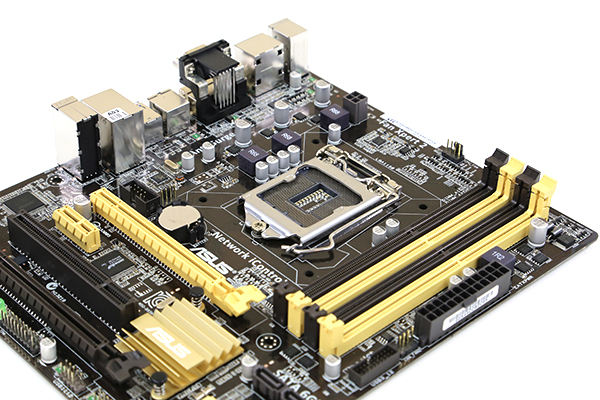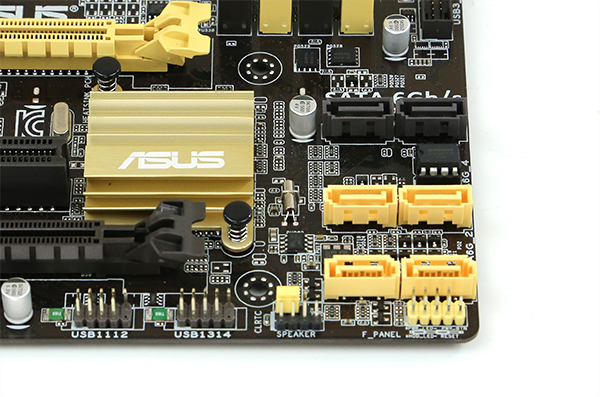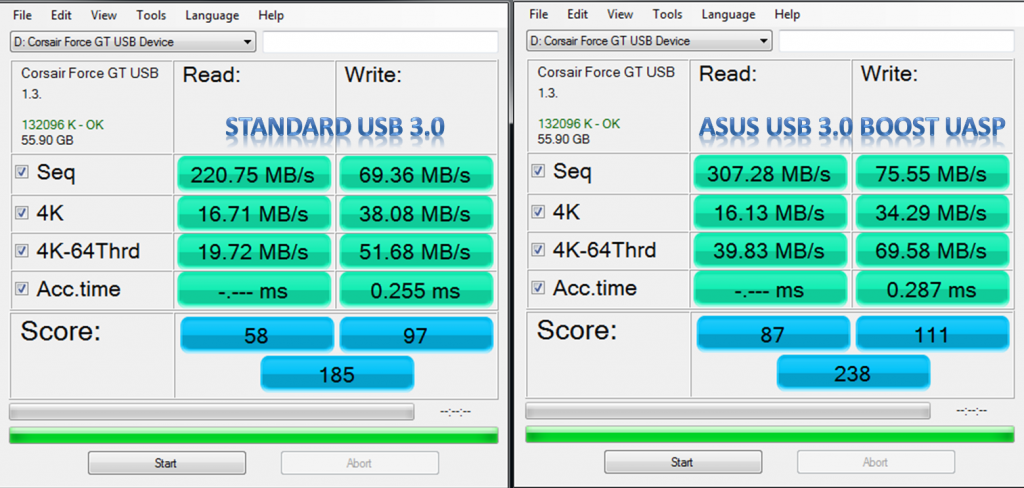The ASUS B85M-E/CSM is a platform designed for small and medium business desktops. CSM is the ASUS designation for corporate stable models, which are designed for longevity. The ASUS B85M-E/CSM utilizes the B85 chipset to incorporate Intel’s Small Business Advantage platform. We recently did a piece highlighting some of the Intel SBA features on Tom’s Hardware and that is a great read. The B85M-E/CSM is a Haswell LGA1150 platform that has features commensurate with its target audience. In terms of features, the B85 chipset is one that sits in a similar market but is positioned as a lower cost business solution as compared to the Q87 chipset. For many businesses, saving several dollars on each desktop is a major consideration. Let’s see what the B85M-E/CSM has to offer.
Test Configuration
To test the ASUS B85M-E/CSM we used a similar configuration as to what we used with the ASUS Q87M-E/CSM and Supermicro X10SLQ reviews earlier this year. We built a fairly high-end desktop that could be used either as a workstation or the basis for a server.
- Processor: Intel Core i7-4770
- Motherboard: ASUS B85M-E/CSM
- Memory: Kingston 16GB DDR3 1600MHz (non-ECC)
- SSD: Samsung 840 Pro 256GB SSD
- Operating System: Windows 8 Enterprise, Windows 7 Enterprise
This should be representative of most typical configurations for this segment. While the motherboard does support multiple GPUs, most systems built around this motherboard will utilized the on-die graphics engine. That same on-die solution allows for vPro remote management functions to be available to the system.
The ASUS B85M-E/CSM
Keeping with a trend of utilizing smaller motherboard form factors for office environments, the ASUS B85M-E/CSM is a mATX form factor. This allows the platform to fit into a much smaller chassis than ATX equivalents. For most business workstation motherboards, the focus is providing a base level of onboard components and the vast majority of applications should not require any additional add-in cards. Shrinking the platform therefore allows for a wide variety of space saving chassis options which in turn allows employees to have more available work space.

The ASUS B85M-E CSM has two PCIe x16 physical slots. There is one PCIe 3.0 x16 slot which can be used for an external GPU or other device. Beyond this there is a PCIe 2.0 x16 (x4 electrical) slot. For lower-bandwidth cards there is a PCIe 2.0 x1 slot and a legacy 32-bit PCI slot. For this platform, this is more than sufficient.
Around the CPU slot, the motherboard design is very simple. Memory slots flank the CPU and the four DDR3 DIMM slots can handle up to 32GB of DRAM. Although there is ample clearance, most processors utilized in B85 platforms will be fine with low cost solutions such as the Intel retail box heatsink/ fan unit.

In terms of disk connectivity there are four 6.0gbps SATA III ports and two 3.0gbps SATA II ports. Six disk drive ports is more than generous for the class of system this board is targeted towards. Generally in these systems there is one main drive and one optical drive. Sometimes an additional drive is provided for backup or extra storage. The inclusion of so many SATA ports means add-in controllers will be very rare on this platform.

The ASUS B85M-E/CSM has a rather robust rear I/O panel. There are four video outputs. A legacy VGA port, HDMI port, DVI port and DisplayPort. Those four outputs represent the four major display connectors in use today. That allows for virtually any monitor to be plugged into the system without requiring adapters.
Alongside these display outputs are six USB ports, two of which are USB 3.0 ports. The other four ports are USB 2.0 and are accompanied by legacy PS/2 keyboard and mouse ports. The RJ-45 network port utilizes a Realtek 8111F Gigabit Ethernet controller. Realtek controllers are standard in this class of motherboard.

Audio is handled by a ALC887-VD CODEC. The three rear mini-jacks easily will support the standard headset or external 2.1 speaker systems. In an office environment, this is more than ample.
UEFI BIOS
ASUS includes its proprietary UEFI BIOS with the B85M-E/CSM. This allows for easy access to low level system settings. For those who have not used a platform with a similar feature, the new UEFI menus allow higher resolution graphics as well as the use of a mouse. To get a good in-depth look at the interface, ASUS posted a video.
That video provides a fairly in-depth preview of the interface.
USB 3.0 and UASP
ASUS has been touting the benefits of an optimized USB interface called USB Attached SCSI Protocol or UASP for some time now and I think it is mature to the point that it is worth a serious look. I did a piece entitled USB 3.0 UASP Mode – Performance Benefit or Marketing Gimmick? recently and figured I would share the benchmark results there, as well as how one would turn the UASP mode on. Here is a quick example using AS SSD of the difference between standard USB 3.0 mode and UASP mode.

One can see that there is clearly a determinable difference in performance using UASP and I recommend it if one can purchase the necessary hardware for it.
Conclusion
Overall, the ASUS B85M-E/CSM is a solid motherboard for business desktops. It is certainly a low cost motherboard that has every basic feature that one needs. In addition, it has some of ASUS proprietary features that add a lot of relative value at this end of the price spectrum. For $90 it certainly does exactly what one would expect it to do.





This is not the most exciting motherboard. More affordable para hombres in my country. I only use one GPU so no need for expensive Z87 chip sets. B85 is fine.
I am having good feeling about this motherboard.
I buy some for a small lab we have. Cheap is good.
Nice motherboard by ASUs for the price.
i want to buy this for my home use
my combo is
Processor Intel® Core™ i3-4150 Processor (3M Cache, 3.50 GHz)
Motherboard ASUS Motherboard – B85M-E
I can confirm this board works with a Dell Perc H700 raid controller.
This is a really great thing to see, if you are using Asus motherboard then it’s really gonna a great thing. Because I believe Asus is the most user-friendly motherboard ever I ever watched. This model of the Asus motherboard is also good. The reviews are well penned.
Hi All, do you know which pcie X16 is the 3.0 and which ome is the 2.0? I mean on the board there is a yellow and a brown one. Can’t find this anywhere. Thanks.